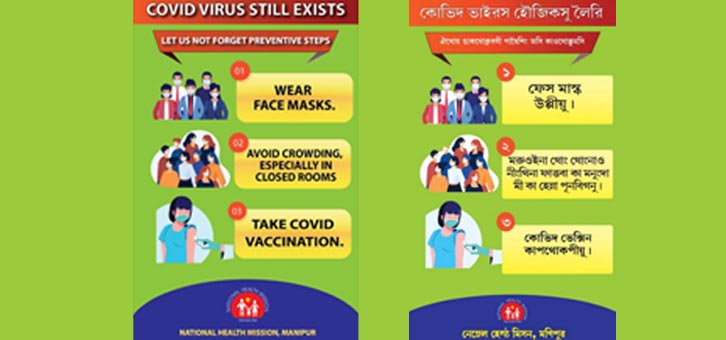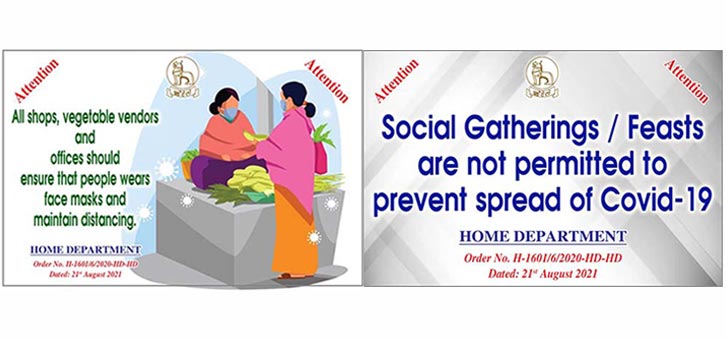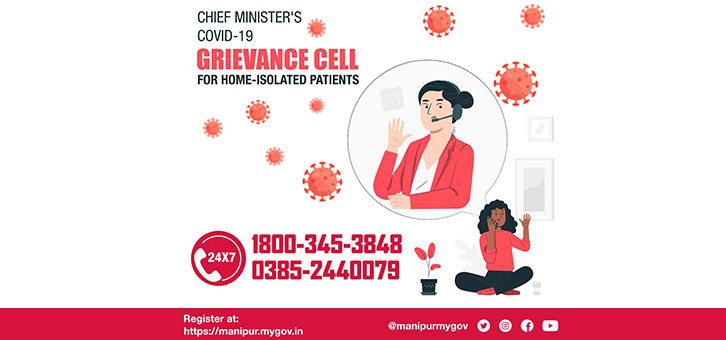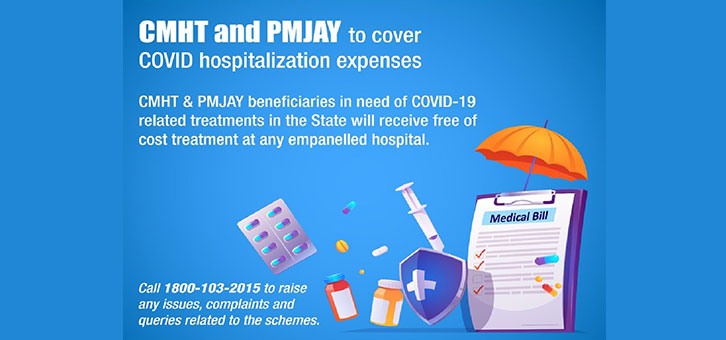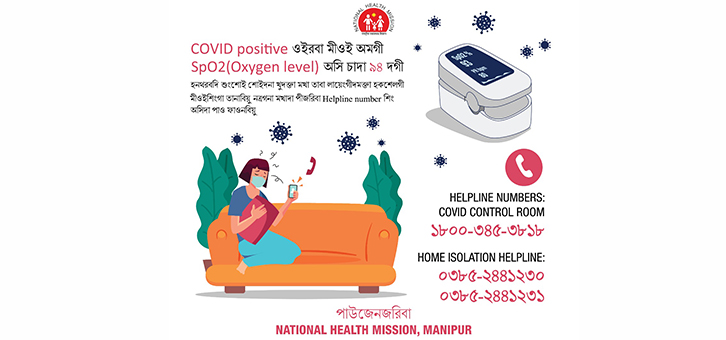About us
National Rural Health Mission (NRHM) was launched in the country on 12th April 2005 by the Hon’ble Prime Minister with special focus to 18 High Focus States including the State of Manipur. For N-E states, it was launched in November 2005 by the Hon’ble Union Minister, Health and Family Welfare.
Vision:
(i) To provide accessible, affordable and quality health care to the rural population, specially the vulnerable sections
(ii) To increase public spending on health from 0.8% of GDP to 2-3% of GDP by end of Mission period (2012)
(iii) To undertake architectural correction of the health system to enable it to effectively handle the increased allocations and promote policies that strengthen public health management and service delivery
(iv) Effective integration of health and family welfare sector with health determinant sector such as sanitation, water supply, nutrition, gender and social sectors
(v) To improve access to rural people specially poor women and children to equitable, affordable, accountable and effective primary health care.
Objectives:
(i) Reduction in child and maternal mortality
(ii) Universal access to food and nutrition, sanitation & hygiene and universal access to public health care services
(iii) Prevention and control of communicable and non-communicable diseases
(iv) Access to integrated comprehensive primary health care
(v) Population stabilization, gender and demographic balance
(vi) Revitalize local health traditions and mainstream Ayurved, Yoga & Naturopathy, Unani, Siddha and Homeopathy (AYUSH)
(vii) Promotion of healthy life styles
Components:
Part A: Reproductive & Child Health Phase II and Family Planning Programs
Part B: New components/ additionalities e.g. provision of untied fund to health Institutions
Part C: Immunization strengthening interventions
Part D: All National Health Programs (e.g., TB, Leprosy etc.) and Integrated Disease Surveillance Program
Part E: Convergence of activities with health determinant sectors e.g., safe drinking water supply, sanitation, education, ICDS etc.
Core strategies:
(i) Train and enhance capacity of PRI to own, control and manage public health services
(ii) Promote access to improved health care at household level through Accredited Social Health Activists (ASHAs)
(iii) Health plan for each village through Village Health Committees of the Panchayat
(iv) Strengthening existing health facilities through better staffing and HRD Policy, clear quality standards, better community support and an untied fund to enable the local management committee to achieve these standards
(v) Decentralization in planning, implementation and monitoring
(vi) Integrating vertical Health and Family Welfare Programs at National, State, District and Block levels
(vii) Developing capacities for preventive health care at all levels for promoting healthy life style, reduction in consumption of tobacco and alcohol etc.
(viii) Promoting non-profit sector for Public Private Partnership for rendering health services in under-served areas
State’s responsibility:
(i) 10% annual increase in yearly health budget
(ii) 15% matching State Share of the total annual NRHM budget (from 2006-07 onwards)
(iii) Signing of MoU indicating both physical and financial achievements
Management Structure:
Secretary (HFW) is the Chairman of the Executive Committee of State Health Society. An IAS Officer is identified as the State Mission Director who is directly supported by a full-fledged State Program Managemt Unit. The main role of the SMD is to coordinate among the various health and health related sector. Also the SMD looks after vital components of NRHM like planning, manpower management of contractual staffs etc. The SMD is supported by the Dircetor of Health and Director of Family Welfare. Both the Dircetors are looking after related components of NRHM. Yet the system of intrasetoral converegence between NRHM, Director (H) and Director (FW) needs further strengthening.
At the District level, Deputy Commissioners are identified as the chairman of District Health Society and the Chief Medical Officers are identified as District Mission Director. They are supported by DPMU. Both State and District Health Societies, have representations from PRI The State does not have Block Health Societies, as the Districts are very small and District Health Society is sufficient to look after the Blocks. Yet, the Block CHC/PHC MOs are supported by BPMUs.
To strengthen management structure at health facilities, RKS are formed at the level of State Hospital, District Hospitals, Sub-District Hospital, CHCs and PHCs.
State Profile:
| Sl. No | Background characteristics | State |
| 1 | Geographic Area (in Sq. Kms) | 22,327 |
| 2 | Number of districts | 09 (5 hilly districts) |
| 3 | Number of blocks | 36 |
| 4 | Number of Villages (Census 2001)<100 polpulation100 -1000 polpulation
>1000 polpulation |
2291653433 |
| 5 | Estimated mid-year Population 2009-10-Urban-Rural
- SC population - ST population |
29.13 Lakh6.93 Lakh (23.8%)22.20 Lakh (76.2%)
5% 38% |
| 6 | Sex Ratio (Census 2001)
|
978957 |
| 7 | Decadal Growth Rate (Census 2001) | 30.02% |
| 8 | Density- per sq. km. (Census 2001) | 107 |
| 9 | Literacy Rate (Census 2001)-Male-Female | 77.87%59.7% |
| 10 | No. of Anganwadi Centres (DHAP 2009-10) | 4501 |
| 11 | Length of road per 100 sq. km | 49 |
| 12 | % of villages having access to safe drinking water facility (NFHS-3) | 32.7 |
| 13 | % of households having sanitation facility (NFHS-3) | 95.5 (NFHS-3) |
| 14 | % of household having electricity connection (NFHS-3) | 87 (NFHS-3) |
| 15 | % of population below poverty line | 32.1 |
| 16 | MortalityMMR (SRS-01)IMR (SRS-06) | 37413 |
| 17 | Crude Birth Rate (SRS-06) | 14.7 |
| 18 | Crude Death Rate (SRS-06) | 5.1 |
| 19 | Total Fertility Rate (NFHS-3) | 2.8 |
| 20 | Mild-moderate under-nourished children (NFHS-3)Severely under-nourished children (NFHS-3) | 23.88.3 |
| 21 | No of Primary schools (DHAP 2009-10)No of Primary school teachersNo of children enrolled in Primary Schools | 2,55212,5503,42,966 |
| 22 | Health Facilities (DHAP 2009-10) | 1 RIMS,1 SH, 7 DHs, 1 SDH, 16 CHCs, 72, PHCs, 420 SCs, 33 Pvt. Clinics / Hosp. |
